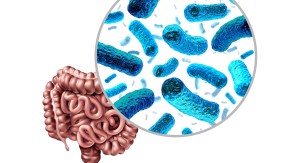Microbiota and performance, bacteria can help you become a better cyclist
Our body is inhabited by 100 million bacteria and other microorganisms. The role of the microbiota in the digestion and assimilation of different nutrients is essential for the proper functioning of the human body in general and for sports performance in particular. A correct balance between these microorganisms is essential for us to efficiently absorb the glucose we ingest or not to suffer intestinal problems during that test we have been preparing for so long.

Microbiome test: what it is and why athletes should take one
In recent times, several scientific studies have determined that the composition of our microbiota is more important than previously thought in the athlete's performance, which has led to the appearance of microbiome tests capable of analyzing, by studying the composition of our feces, which are the predominant populations of microorganisms in our intestine and the effects that this has on it.
For example, a microbiota study conducted in 2015 analyzing the feces of 15 runners after the Boston Marathon found an increased presence of the microbe Veillonella Atipica, a bacterium responsible for breaking down lactate in the form of fatty acids. The experiment of introducing this bacterium into the intestine of mice was performed and found that it increased the resistance of the mice.
RECOMENDADO

What is heart rate variability and how does it affect the cyclist?

Change wheels if you want to transform your bike's behavior

What bike size do you need? Here's how to find out

How does age affect performance and recovery?

10 tips for safer and faster downhills on road bikes

The best gravel groupsets of the moment

It is just one of the examples of the great influence that the microbiota can have on our sports performance. A microbiome test, therefore, can be tremendously useful to know which microorganisms have a greater presence in our intestine. With this data in hand, we can adjust our diet to promote the growth of specific populations of microorganisms.
Some examples of the influence of diet on the microbiota are that the consumption of animal proteins and saturated fats promotes the presence of the group of microorganisms called bacteroides, which are associated with obesity. On the other hand, diets rich in carbohydrates and simple sugars predominate the Prevotella group of microorganisms, which is related to intestinal inflammation.

In general, foods with fiber and easily fermentable foods, mainly those of vegetable origin, serve as a main source of food for the microbiota, making it easier for the microorganisms in our intestine to thrive. Something similar happens with healthy fats and quality proteins.
In addition, the consumption of fermented foods provides a contribution of microorganisms to the population of our intestine, such as the live bacteria contained in yogurt.
Another useful piece of information that can be provided by knowing the composition of our microbiota through a microbiome test is that the alteration of any of the populations can serve as a foretaste to avoid future health problems, such as the aforementioned presence of bacteroids associated with increased cholesterol, whose harmful effects on health do not need to be explained.